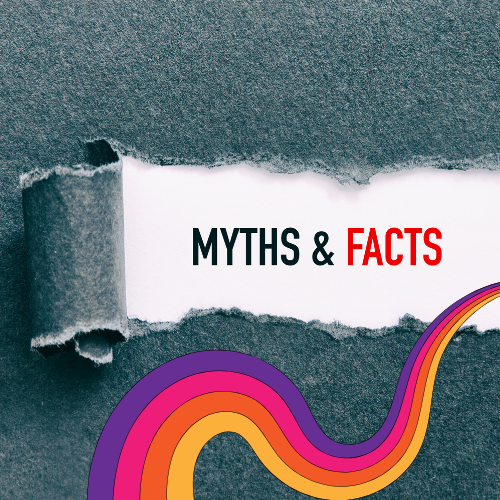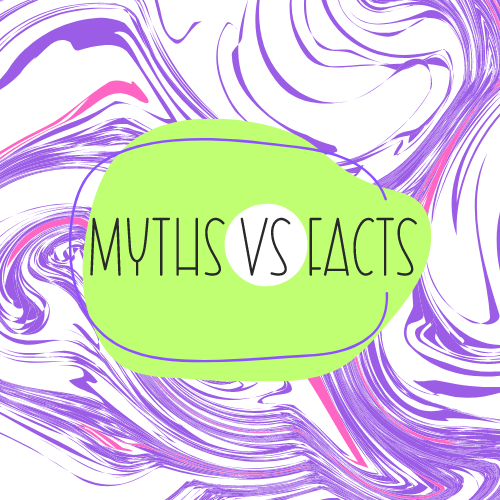When examining the risks associated with psychedelics, it’s essential to look at psychedelic myths and distinguish between evidence-based findings and the sensationalised narratives that have often dominated public discourse due to historical criminalisation measures and media coverage.

Here are some evidence-based insights into the risks associated with psychedelics:
- Physical Health Risks: In general, psychedelics are not considered physically harmful or addictive when used responsibly and in appropriate doses. Unlike many other drugs, such as opioids or stimulants, psychedelics typically do not lead to physical dependence or overdose deaths. However, it’s important to note that some psychedelics can cause temporary increases in heart rate and blood pressure, which could pose risks for individuals with pre-existing cardiovascular conditions.
- Psychological Risks: While psychedelics can induce intense psychological experiences, they do not inherently cause mental illness. However, individuals with a predisposition to certain mental health conditions, such as schizophrenia or psychosis, may be at risk of exacerbating these conditions with psychedelic use. Additionally, the context in which psychedelics are used (set and setting) can significantly influence the overall experience and potential risks. Under controlled and supportive settings, such as those used in clinical trials, the risk of psychological harm is minimised.
- Acute Effects and Bad Trips: Psychedelics can produce profound alterations in perception, cognition, and emotions, often referred to as “trips.” While most experiences are positive or neutral, some individuals may encounter challenging or distressing episodes, commonly known as “bad trips.” These experiences can be psychologically distressing but are typically temporary and can often be managed with appropriate support and guidance.
- Potential for Flashbacks: Some individuals report experiencing “flashbacks” or spontaneous recurrences of psychedelic effects long after the initial drug experience has ended. While these occurrences are rare, they can be distressing for those who experience them. The exact mechanisms underlying flashbacks are not fully understood, but they are generally considered to be a manifestation of the drug’s lingering effects on the brain.
- Legal Risks: Despite growing acceptance of psychedelics for therapeutic and research purposes, many psychedelics remain classified as illegal substances in most countries. As a result, individuals who use psychedelics may face legal consequences, including arrest, fines, and imprisonment. The criminalization of psychedelics also contributes to stigma and impedes scientific research into their potential benefits and risks.
Psychedelic Myths 1 – You Could Overdose on Psychedelics
When used at normal therapeutic doses and under appropriate supervision, psychedelics are generally considered to be physiologically safe. Here are some key points regarding the safety of psychedelics:
- Safety at Normal Doses: Psychedelics are typically considered safe when taken at standard therapeutic doses. The risk of experiencing adverse physiological effects or overdose is minimal under these circumstances.
- Rare Occurrence of Overdose: Overdosing on psychedelics is rare, and it usually occurs at extremely high doses that are many times higher than the recommended therapeutic range. For example, instances of LSD overdose have been reported at doses more than 550 times the standard therapeutic dose. However, even in these cases, individuals have typically made full recoveries without long-term consequences.
- Potential Risks of Polydrug Use: Mixing psychedelics with other substances, such as alcohol or stimulants, can increase the risk of adverse effects or toxicity. Combining psychedelics with other drugs alters their pharmacokinetics and can amplify their effects, leading to unpredictable outcomes.
- Strict Dosage Control in Clinical Settings: In clinical settings where psychedelic-assisted therapy is administered, dosages are carefully calibrated and strictly controlled by trained clinicians. Patients are closely monitored for any signs of physiological distress or overdose symptoms. Due to these stringent protocols, instances of toxicity or overdose within clinical settings are exceedingly rare.
- Importance of Supervision and Monitoring: Despite the overall safety profile of psychedelics, it’s essential for individuals to use them responsibly and under appropriate supervision. Clinicians play a crucial role in ensuring the safe administration of psychedelics by closely monitoring patients and providing guidance and support throughout the therapeutic process.
In summary, while psychedelics carry a low risk of physiological harm when used appropriately, caution should be exercised, particularly when combining them with other substances. In clinical settings, where dosages are carefully controlled and patients are closely monitored, the risk of toxicity or overdose is minimal.
Myth – People Hurt Themselves While on Psychedelics
It’s important to recognize that while psychedelic experiences can be profoundly transformative and therapeutic for many individuals, they also carry certain risks, particularly when not used responsibly or in the absence of appropriate supervision. Here’s a closer look at the potential risks associated with psychedelic experiences and the measures taken to mitigate them:
- Emotional Intensity and Trauma Resurfacing: Psychedelics have the capacity to bring unresolved emotional issues and past traumas to the surface, which can be overwhelming for some individuals. Without adequate preparation, support, and guidance, these experiences may lead to distress or psychological crisis.
- Risk of Dangerous Behavior: In rare cases, individuals undergoing psychedelic experiences may engage in impulsive or dangerous behaviors, particularly if they are unprepared, in the wrong setting, or experiencing overwhelming emotions. Tragically, some individuals have even engaged in fatal actions, such as jumping from buildings, while under the influence of psychedelics.
- Comparative Risk: It’s essential to contextualize the risk of harm associated with psychedelics relative to other substances. While psychedelics carry a relatively low risk of physical harm compared to substances like alcohol or opiates, the potential for adverse outcomes, including psychological distress or dangerous behavior, still exists.
- Mitigation Strategies in Psychedelic Therapy: Within the context of psychedelic-assisted therapy, the risk of physical harm is mitigated through the implementation of safe standards of care. This includes establishing rapport and trust with patients before their experiences, providing comprehensive education and preparation, and creating a controlled setting under the supervision of trained clinicians.
- Importance of Education and Supervision: Proper education and supervision are paramount for ensuring the safety and success of patients undergoing psychedelic therapy. By equipping individuals with the necessary knowledge, tools, and support, clinicians can help mitigate the risks associated with psychedelic experiences and facilitate positive therapeutic outcomes.
In summary, while psychedelics hold significant therapeutic potential, it’s crucial to approach their use with caution and responsibility. By implementing appropriate safeguards, including education, preparation, and supervision, clinicians can help minimize the risk of harm and maximize the therapeutic benefits of psychedelic-assisted therapy for patients.
Myth – Psychedelics Cause Psychosis
The relationship between psychedelics and psychosis, particularly schizophrenia, is a complex and nuanced topic. While early research and cultural perceptions suggested a causal link between psychedelics and psychosis, more recent evidence paints a different picture.
- Early Research Limitations: The studies conducted in the 1960s, which contributed to the fear of psychedelics inducing psychosis, often lacked rigorous methodological standards. Factors such as inadequate setting control, failure to exclude individuals at risk for psychosis, and absence of control groups diminish the reliability and relevance of their findings.
- Unethical Research Practices: Many of these early studies subjected participants to high doses of psychedelics without proper preparation or support, and in some cases, participants were even restrained during their experiences. It’s plausible that adverse outcomes, including psychotic episodes, were more likely the result of these unethical research methods rather than the inherent properties of psychedelics themselves.
- Risk for Individuals with Psychotic Disorders: While modern clinical trials have not observed psychosis resulting from controlled psychedelic use, there are rare instances where individuals, particularly those with a history of psychotic disorders, may experience overwhelming hallucinations or exacerbation of psychotic symptoms. These cases underscore the importance of screening individuals for risk factors and providing appropriate support and supervision during psychedelic experiences.
- Potential Mechanisms: The exact mechanisms underlying the relationship between psychedelics and psychosis remain incompletely understood. It’s possible that psychedelics may temporarily disrupt normal cognitive processes and increase susceptibility to psychotic-like experiences, particularly in vulnerable individuals. However, the precise interplay between neurobiology, individual susceptibility, and environmental factors requires further investigation.
Myth – Psychedelics Cause Dependency
The relationship between psychedelics and dependency differs significantly from that of other substances. Here’s an overview of the evidence and nuances regarding dependency on psychedelics:
- Low Dependency Potential: Unlike substances such as opioids, stimulants, or alcohol, psychedelics have a notably low potential for causing dependency. Few individuals find it challenging to cut down on psychedelic use, which is a hallmark of pathological dependency. The majority of people who use psychedelics do not develop a dependency on them.
- Hallucinogen Use Disorder (HUD): The Diagnostic and Statistical Manual of Mental Disorders (DSM-V) includes a category for hallucinogen use disorder (HUD), which encompasses hallucinogen dependence, abuse, and other related issues. However, it’s important to recognize that HUD is relatively uncommon, and the risk of developing dependency specifically on psychedelics is low.
- Risk Comparison: In comparison to other substances, psychedelics consistently rank low in terms of abuse and dependency potential. The Substance Abuse and Mental Health Services Administration (SAMHSA) ranked psychedelics at the bottom of their list of substances based on dependence risk, further highlighting their relatively low propensity for causing dependency.
- Psychedelic Therapy Considerations: While the risk of dependency on psychedelics is low, psychedelic therapists should still educate themselves about the potential for abuse and dependency, particularly in rare cases where it may occur. Incorporating strategies for prevention and harm reduction into therapeutic practices can help mitigate these risks and ensure the safe and responsible use of psychedelics in therapeutic settings.
Myth – Psychedelics Cause Flashbacks
The phenomenon of flashbacks, particularly in the context of hallucinogen use, has been a subject of both popular belief and clinical investigation. Here’s a closer look at the evidence surrounding flashbacks and their association with psychedelics:
- Hallucinogen Persisting Perception Disorder (HPPD): Flashbacks, or persisting perceptual disturbances, are sometimes observed in individuals who have used hallucinogenic substances. When these disturbances persist beyond the acute effects of the drug, the condition is termed Hallucinogen Persisting Perception Disorder (HPPD). While the prevalence of HPPD among hallucinogen users is reported to be around 4.2% according to the DSM-V, it’s essential to note that this figure may overestimate the frequency, especially considering clinical contexts where rigorous screening and patient preparation are implemented.
- Association with Anxiety and Panic: Some research suggests that individuals who experience anxiety or panic during their psychedelic experiences may be more likely to develop HPPD afterward. This finding raises the possibility that HPPD symptoms could be related more closely to psychological factors, such as trauma response, rather than residual pharmacological effects of the psychedelics themselves. However, further research is needed to elucidate the underlying mechanisms and risk factors associated with HPPD.
- Not Unique to Psychedelics: It’s important to recognize that flashbacks and persisting perceptual disturbances are not specific to psychedelics. Similar phenomena have been reported in association with other psychoactive substances, such as alcohol and benzodiazepines. This suggests that the mechanisms underlying flashbacks may involve broader neurobiological processes rather than being unique to the pharmacological properties of psychedelics.
- Clinical Context and Risk Mitigation: While HPPD and flashbacks are potential risks associated with hallucinogen use, they appear to be relatively rare, especially in clinical settings where proper screening, preparation, and support are provided. Incorporating thorough patient assessment and education about potential risks into psychedelic therapy protocols can help mitigate these concerns and ensure safe and beneficial experiences for individuals undergoing psychedelic-assisted therapy.
In summary, while flashbacks and HPPD are recognized phenomena associated with hallucinogen use, their prevalence appears to be relatively low, especially in clinical contexts where appropriate precautions are taken. Further research is needed to better understand the underlying mechanisms and risk factors associated with these phenomena, as well as to inform strategies for prevention and management.
In summary, while hallucinogen use disorder is recognised in diagnostic criteria, the evidence suggests that psychedelics have a low potential for causing dependency compared to other substances. Understanding the nuances of psychedelic use, including the low risk of dependency and the importance of responsible practices, is essential for promoting informed decision-making and ensuring the safe and beneficial integration of psychedelics into therapeutic settings.
Myth – You will Experience a “Bad Trip”
It’s important for patients to understand that while challenging experiences, commonly referred to as “bad trips,” can occur during psychedelic use, they are typically transient and may still contribute to long-term therapeutic benefits. Here’s a breakdown of key points regarding challenging experiences with psychedelics:
- Nature of Challenging Experiences: Challenging experiences during psychedelic use are characterized by feelings of fear, anxiety, dysphoria, and paranoia, which typically occur during the acute hallucinogenic period. These experiences vary widely in intensity and duration, but they often subside as the effects of the drug wear off.
- Long-Term Benefits: Despite the discomfort associated with challenging experiences, research suggests that a significant proportion of individuals who undergo such experiences still report long-term benefits from their psychedelic use. Studies have shown that up to 84% of individuals who self-report challenging experiences from psychedelics report deriving lasting positive outcomes.
- Factors Influencing Experience: The factors contributing to whether an individual has a positive or challenging experience with psychedelics are still not fully understood. However, research indicates that individual traits such as openness, acceptance, and absorption may predispose some individuals to have more positive experiences, while others who are more apprehensive or preoccupied may be more prone to challenging experiences.
- Mitigation Strategies: To mitigate the risk of challenging experiences, it’s crucial to pair psychedelic experiences with therapy sessions and close supervision. Careful control of the setting and dosage is also essential to decrease the likelihood of negative outcomes. With proper guidance and support, individuals can navigate challenging experiences in a safe and supportive environment.
- Ongoing Research and Understanding: As research in the field of psychedelic therapy continues to evolve, more insights will likely emerge regarding the prevention and interpretation of challenging experiences in patients. Ongoing studies aim to further elucidate the factors influencing the subjective effects of psychedelics and inform best practices for maximizing therapeutic outcomes while minimizing risks.
In summary, while challenging experiences can occur during psychedelic use, they are often transient and may still contribute to long-term therapeutic benefits. By incorporating careful preparation, guidance, and support into psychedelic therapy protocols, clinicians can help patients navigate these experiences safely and effectively.
Psychedelic Myths Conclusion
Overall, while psychedelics carry certain risks, particularly in specific contexts or for individuals with underlying vulnerabilities, the evidence suggests that these risks are often exaggerated in comparison to other substances. A more balanced and evidence-based approach to understanding psychedelics is crucial for informed policymaking, public education, and clinical practice.



